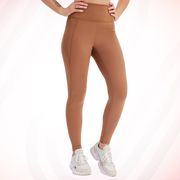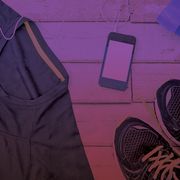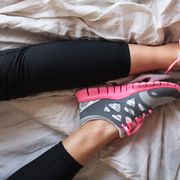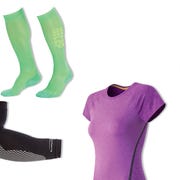It's impossible to run a double-blinded study of compression socks (and many other recovery techniques, like ice baths and massage)—you always know when you're "supposed" to benefit. One way to tease out the difference between psychological and "true" physiological gains is to ask the subjects in the study whether they think the intervention will make a difference. That allows you to check at the end of the study to see whether pre-existing beliefs affected the results.
That's what researchers at the Australian Institute of Sport did for a compression sock study whose preliminary results were presented by Ned Brophy-Williams at the ACSM conference last month. They had 12 well-trained male runners perform back-to-back 5K time trials with one hour between them. They did this on two separate occasions, once while wearing compression socks during the one-hour recovery period, and once without.
There were seven runners with positive beliefs about compression socks, and five runners with neutral or negative beliefs. During the compression sock trial, there was no overall difference between the first and second 5Ks—but there was a difference if you broke it down by beliefs:
So for the believers, there was a tiny (and non-significant) speed-up in the second trial, while the skeptics had a significant (and unsurprising) slow-down. The error bars here are +/- ~20 seconds, but the difference is still striking.
The study also looked at measurements like oxygen consumption, heart rate, and perceived exertion, but didn't find any differences between the groups. On the other hand, muscle soreness and fatigue were lower just before the second time trial for everyone in the compression socks, regardless of their prior beliefs.
So the overall picture is quite mixed. The fact that pre-existing beliefs have a big effect on how well compression socks work definitely seems to suggest that some of the benefits are "all in your head." But it's worth remembering that the same is probably true of any kind of intervention, including "real" ones. Tylenol makes your headache go away, but I'll bet the results are strongest for those who really believe that Tylenol is effective. It would be interesting to see this sort of analysis used far more widely, in both sports science and health research.
Watch the video above for a tip on how to quickly put on compression socks.
* * *
Read the Sweat Science book, and follow the latest posts via Twitter, Facebook, RSS, or (new!) weekly email digest.












